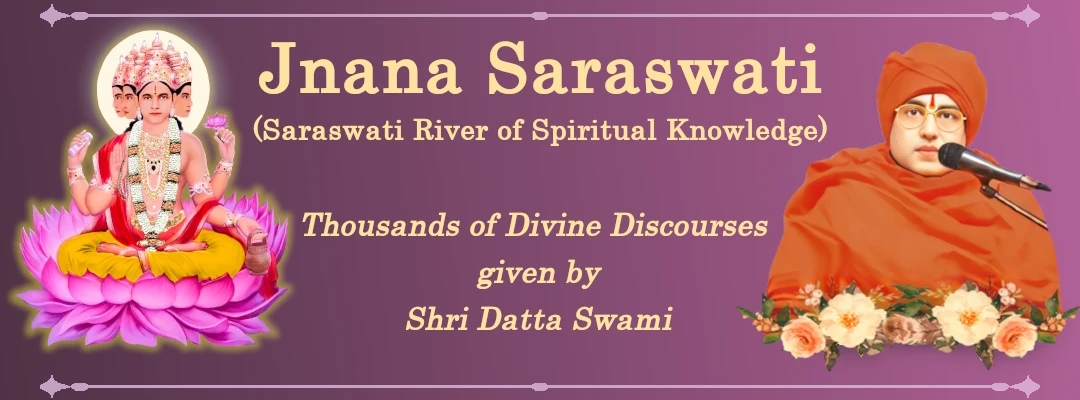
Posted on 14 Mar 2022. Share
[Smt. Priyanka asked: Padanamaskaram Swami, Thank You for explaining regarding both Sati devi and Chandralekha. You said that they both should have controlled their emotions by doing peaceful analysis instead of giving in to their extreme emotions. Swami, please forgive me if the following thoughts are not correct. Can You please clarify another doubt expressed below regarding controlling extreme emotions?
Can it be considered that Sati Devi consciously chose to end Her life overwhelmed by her emotions whereas, Chandralekha's life ended by itself (without her conscious decision) only after She felt extreme sadness about being unable to meet Krishna? Since Sati devi made a conscious choice, can we say that only She had a choice to be with Lord Shiva again by going back to Him? Whereas, Chandralekha lost her life in a natural way out of extreme emotion. So can we say that She did not have this choice of meeting Lord Krishna again? When Chandralekha was opposed by her family, She felt extreme pain for not being able to meet Krishna but also extreme happiness thinking about Krishna. The sadness and happiness were both extreme and this led Her to exhaust the fruits of Her sinful and meritorious deeds of Her life respectively. As a result, Her life ended. When Chandralekha was so overpowered by Her emotions that was intense enough to end Her life in a natural way, then how can the mind work practically to do a peaceful analysis to control the emotion? How could She have made efforts in this situation? It may be possible to manage a normal level of emotion in general, but can a soul truly manage an extreme emotion? If souls cannot, then is prevention of the extreme emotion the only way? Swami, how can one realize when an emotion is converting into an extreme one and control it? At Your Divine lotus feet, Priyanka]
Swami replied:- The stories of various forms of God are only written in secondary scriptures called the Puranams and the main aim of these stories is only to preach lessons to humanity. The various forms of God act in these roles of these stories because we will pay more attention when it is the story of God. All the male forms of God are the roles of God Datta and all the female Divine forms are the roles of Goddess Anaghā, who is the inseparable power of God Datta. By this, our attention will be strongly stuck in the incidents that teach us lessons in both Pravrutti and Nivrutti.
We appreciate the devotion of Sati and Chandra Lekha because they considered even their lives as not more valuable than God. This angle helps us in the path of Nivrutti. But, in the angle of Pravrutti, knowledge is more valuable than emotion. Sometimes, the emotion destroys everything due to hasty conclusions. For the followers of Pravrutti, the lessons of Pravrutti must be important whereas for the followers of Nivrutti, lessons of Nivrutti are important. In the Divine plays of God, both spiritual and worldly angles exist simultaneously so that the corresponding angle can be followed by the concerned line. Had Sati remained with Her Husband, cupid might have not been burnt to ash by God Shiva. Had Chandra Lekha controlled her emotion with analytical knowledge, the dance at Brundavanam might have continued for some more years to please Gopikas more. Due to the death of Chandra Lekha, Krishna stopped the dance at Brundavanam in the second year itself. Sati has an energetic incarnation and She met God Shiva once again in the new name, Parvati. Chandra Lekha met Krishna in every latter birth of Krishna. How can Datta and Anaghā be separated? They are both like Hero and Heroine acting in cinemas for the welfare of humanity preaching wonderful lessons to the souls.
★ ★ ★ ★ ★
Also Read
Whether Chandralekha Is Goddess Sati Or An Ordinary Soul?
Posted on: 27/10/2021Sages Ended Sexual Life After Getting Children
Posted on: 30/10/2015Is It Correct To Feel That I Should End My Life If Service To God Is Not Done By Me?
Posted on: 04/02/2024Is Family Life An Obstacle For Spiritual Life?
Posted on: 28/03/2023How Are The Success In Worldly Life And Spiritual Life Different?
Posted on: 17/06/2021
Related Articles
What Is That We Have To Learn From The Gopika Called Chandralekha?
Posted on: 12/09/2021Why Is That Chandralekha Could Not Overcome Her Family Bonds When They Competed With God?
Posted on: 12/03/2022What Is The Place Of Emotions In Spirituality?
Posted on: 05/08/2022When A Devotee Loves God Selflessly, How Can Such Devotee Control The 'self' When It Doesn't Exist?
Posted on: 03/11/2024How Can The Divine Knowledge Trigger Love For God?
Posted on: 20/02/2022